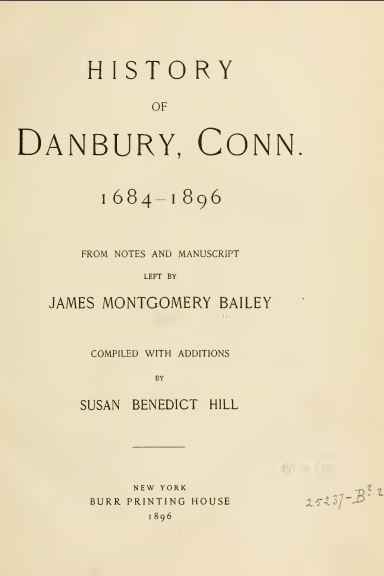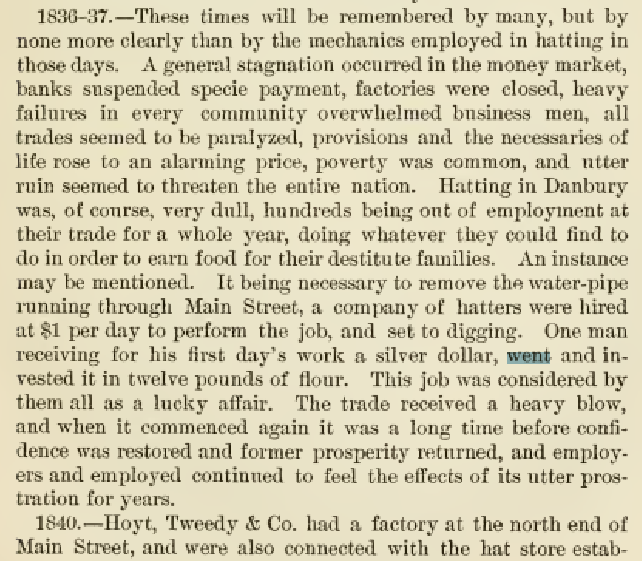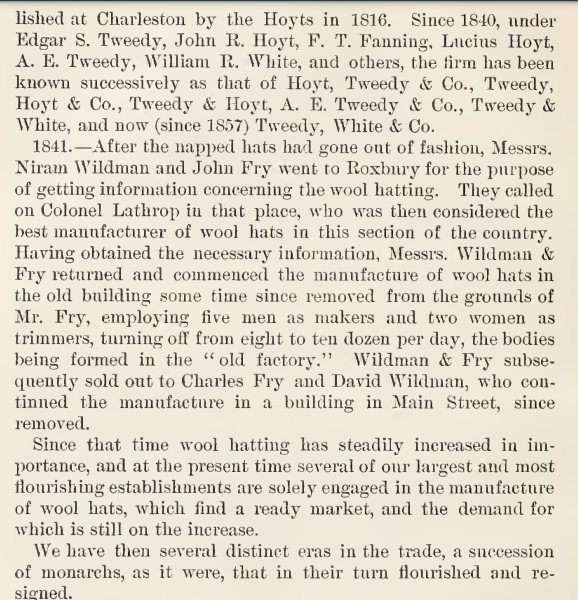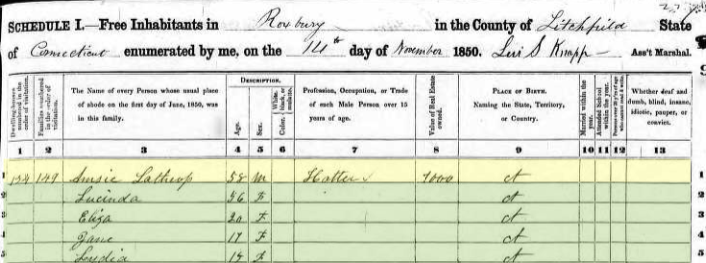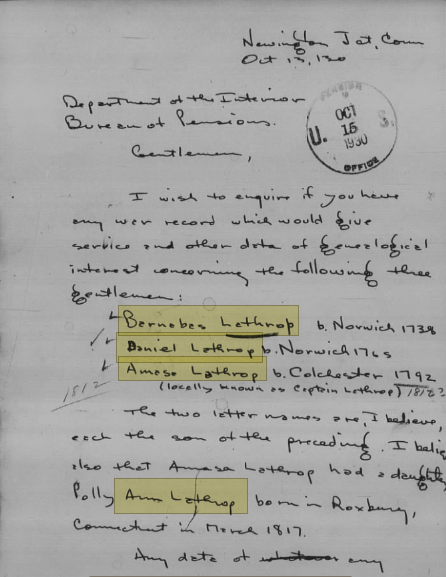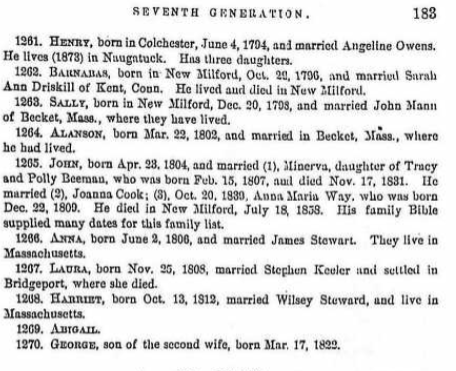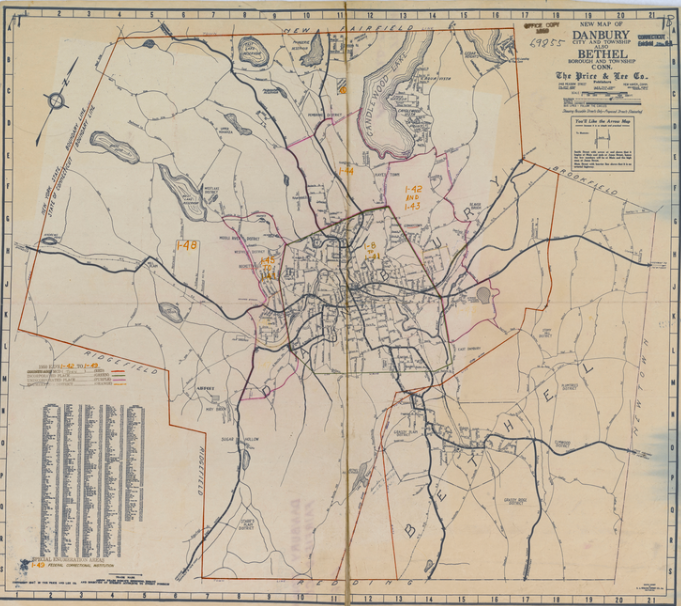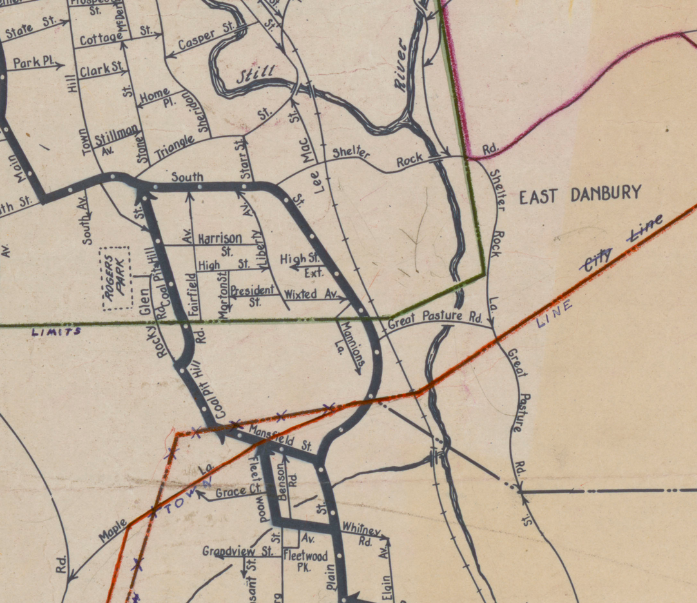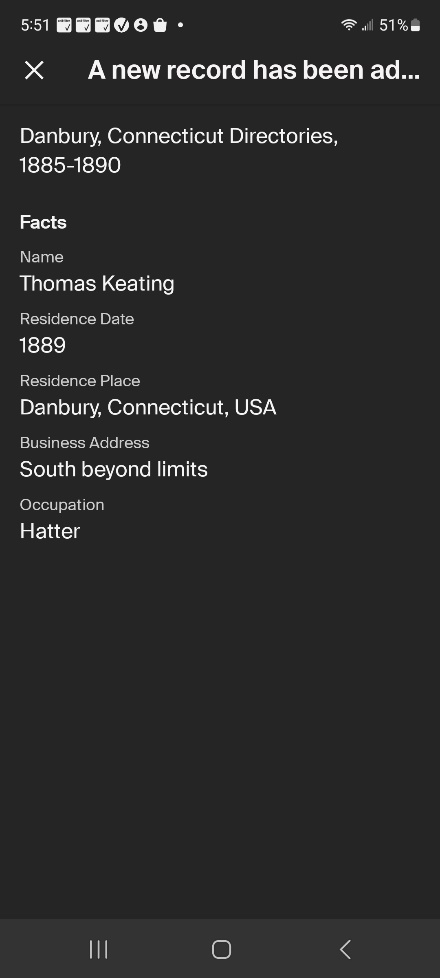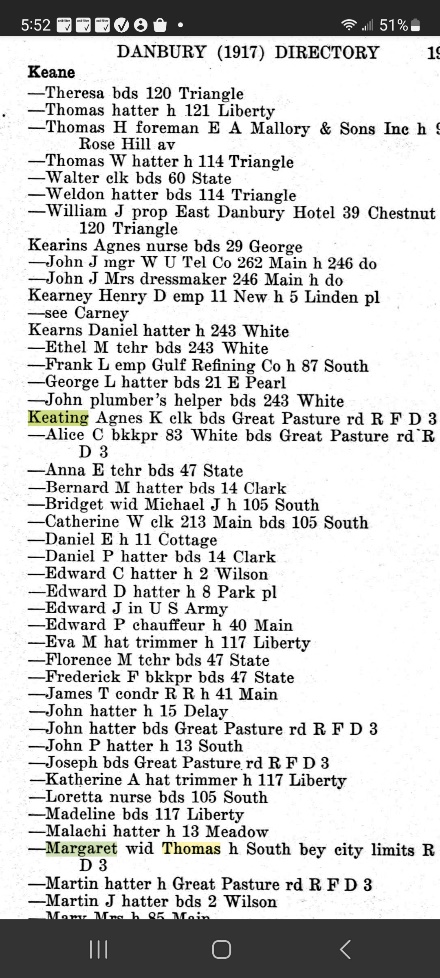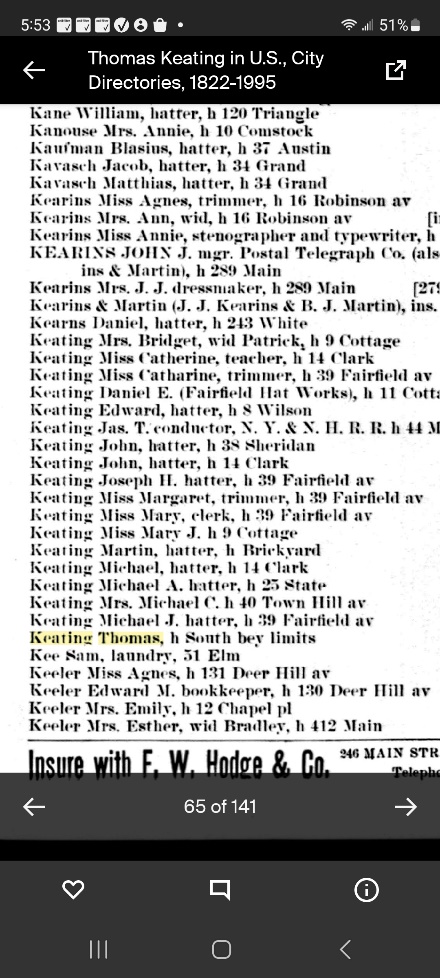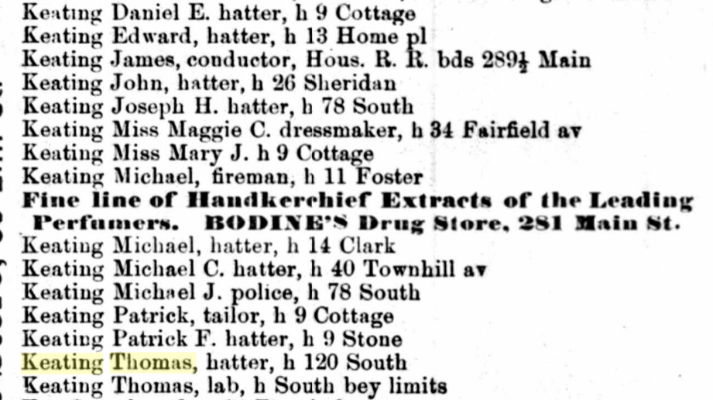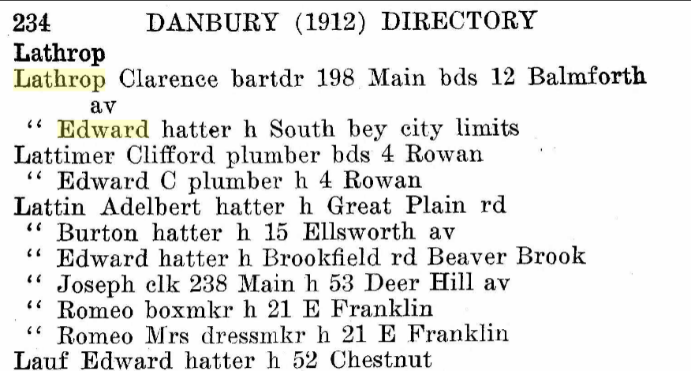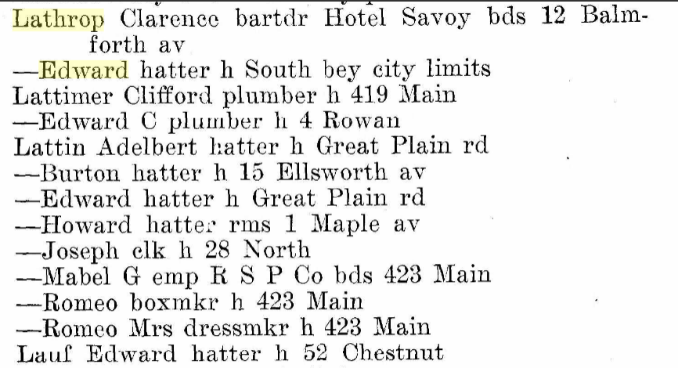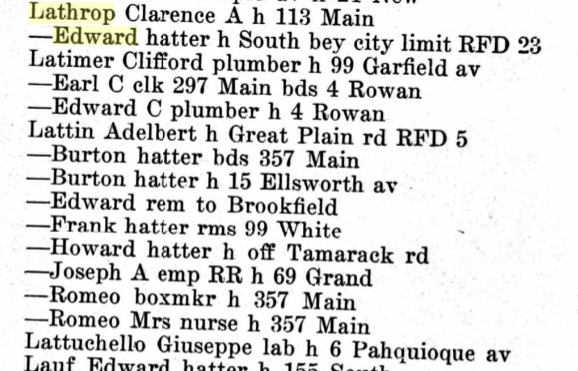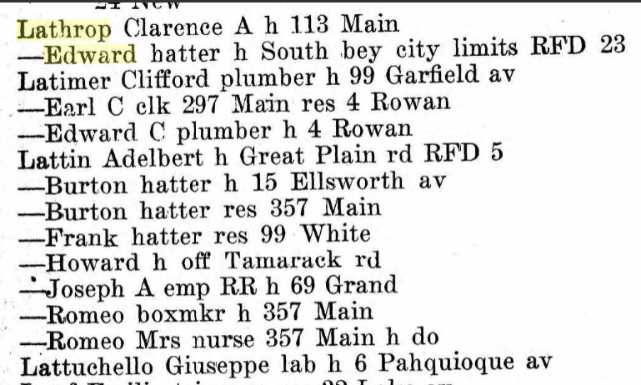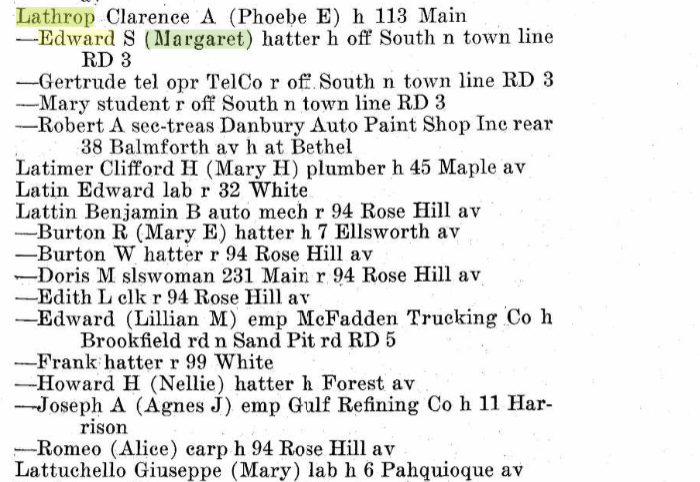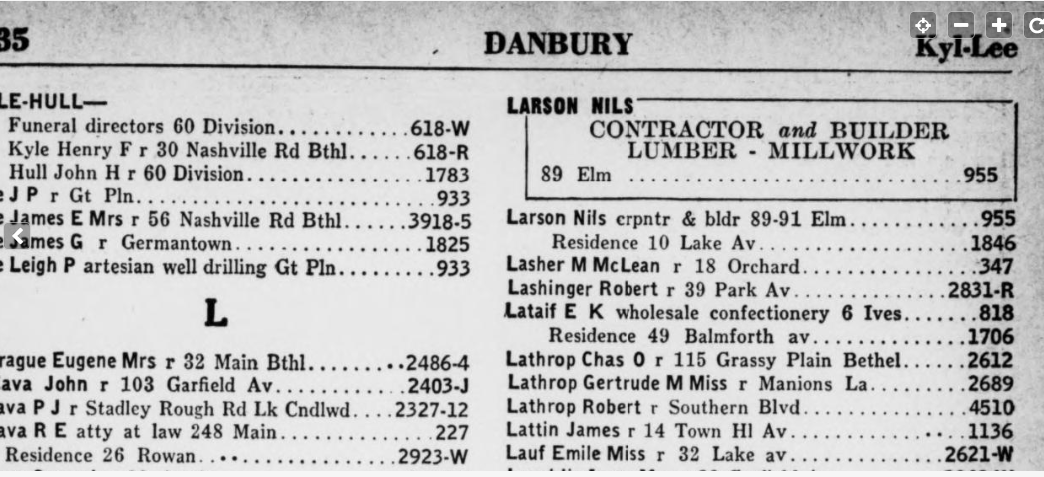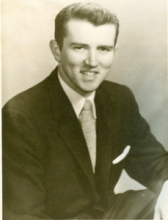To me, the story of Toddy Crotty begins with a sad ending. The following, rather bland, obituary tells us about all there was to know about him, at least in his final years.
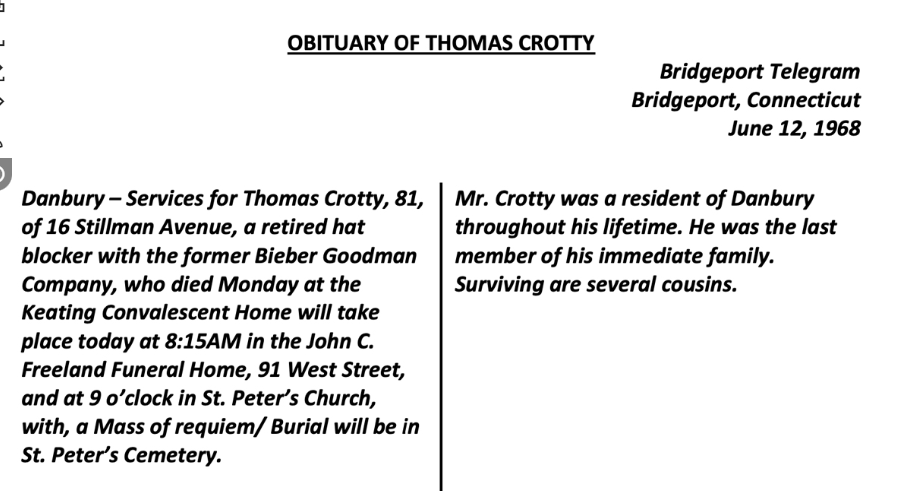
As you can see, Toddy’s real name was Thomas, Thomas Albert Crotty, to be exact. The reason I am familiar with the June 12, 1968 part of the Toddy Crotty era is because I was there. I was a pallbearer for Toddy, along with my father, Uncle Walt, Uncle Howard and two guys who worked for John C Freeland.
Though I really didn’t have a keen understanding of the situation, I now understand the four of us were riding in the hearse together because we were next of kin. Actually, I only gained pallbearer status because I worked for my father in his television shop on 9 Main St.
My father used to help Toddy out all the time. Not only did he fix Toddy’s TV, as you would expect, he also fixed anything else in Toddy’s house that needed fixing.
Toddy lived alone at 16 Stillman Ave for more than 15 years, when the time came that Toddy needed to go to a nursing home, my father made the arrangements that put him there. I do remember that Toddy was in The Keating Nursing Home. I also remember my father was very upset when someone who might have been his cousin called him at the store one day and said, “Crotty’s dead” and then hung up. At this point, my father didn’t have time to mourn but he was truly taken back by this rude call. He rightly was put into a period of grief by Toddy’s passing but the unnecessary bluntness of the phone call greatly exacerbated it!
The funeral wasn’t well attended but my father’s sisters were there. There weren’t many others. It was obvious the Lathrop family was Toddy’s family but anytime I ever asked my father or Aunt Mimi how we were related, they would just say, “he’s some kind of cousin.”
In the few weeks he spent in the home, Toddy knew it was his final days. He told my father, “I would have had something to leave you Edward but the problem is I lived too G D long! Then, what little I did have left, these people took.” He was talking, of course, about the Keating Nursing Home.
Toddy did have a way with words, that’s for sure. For many years he lived on Keeler St. In his final decade and a half, he lived on Stillman Ave which is very close to Sacred Heart Church. So, he started attending mass there. He walked to church every week. My father asked him why he became a church going man when he never was before in his life. “Well, you know, Edward, around here, it’s the G D style.”
Though he walked to church, he drove everywhere else and he had his driver’s license for a long time. I’ve seen probably a couple hundred World War I draft cards. One of the questions they ask on this card is “Can you drive a car?” The overwhelming majority of answers I have seen to this question is “no.” This was 1917 and just not that many people drove back then yet. I know that Toddy drove during my lifetime and he loved to.
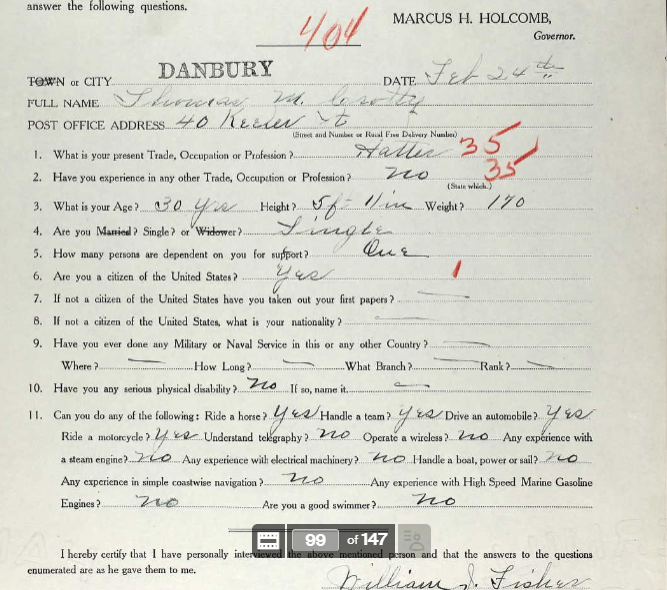
I have great memories of Toddy Crotty! He surely was a colorful character. I remember he was a professional wrestling fan and he believed it to be 100% real! At 9 years old, I too, loved professional wrestling! Toddy and I would often compare notes about “The Masked Marvel,” Bruno Sam Martino and Chief Jay Strongbow. For sure, we had a common interest and we were both emphatic about how bad the bad guys were and how good the good guys were! “DID YOU SEE THAT SON OF A B$%#&*” he’d burst out when the villain pulled one of his dirty tricks. My father, a non-believing wresting observer, would just coast with it. To him, Toddy truly was family. It took until about 55 years after Toddy’s passing, but now, I think I know why.
I looked at the 1880 census to find my father’s grandparents and his Uncles Mike, Ed and Tom, and his aunt Susan, who passed away at a young age, all living in Ralston, PA. His mother hadn’t yet been born. Below this family was Edward, Bridget and Minnie Crotty. They lived either next door or probably in the same house, albeit a different household, as the Keatings

The 7-year-old daughter, Minnie, is actually Mary Crotty, who in later years would be Mrs. John Dunleavy of Danbury Ct.
Then we move up to the 1900 census and look at the two households, here’s what we find:


Both families are living in Danbury, Conn. The Crotty’s are living on Starr St and the Keatings in South Bey Limits. There’s a new member, Thomas, in the Crotty family and Margaret, “Ma,” is now a part of the Keating family.
In 1880, since they lived so close together, it would be reasonable to suspect that the elder Margaret Keating and Bridget Crotty were sisters. Remember Margaret’s married name was Keating but her maiden name was also Keating. It becomes more suspicious since the two families moved to the same town at the same time. To raise suspicions even further, the 1900 census tells us both Margaret and Bridget immigrated to the United States in 1864. All these things would make you think Margaret and Bridget could well be sisters but Minnie Crotty Dunleavy’s obituary tells the rest of the story.
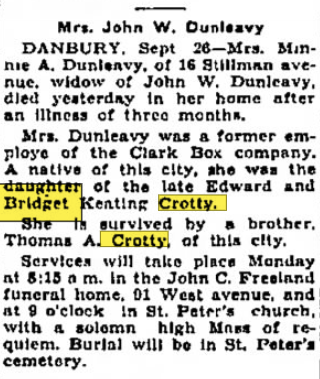
Of course, Margaret Keating’s husband was also a Keating. However, he immigrated to the U.S. in 1863. Also, Thomas Keating was born in January 1850 and Bridget Keating Crotty was born in March of the same year. So, the siblings were Margaret and Bridget. Margaret, by the way, was born in 1847. So, there is no gestation period conflict there.
Though we don’t yet know the name of the Keating Girls’ parents, it would have to be the coincidence of the century if they were not sisters. We have the genealogical proof the elder Margaret Keating and Bridget Keating Crotty were sisters. This means Margaret Ma Keating Lathrop and Toddy Crotty were first cousins. Toddy was the last of the living Keatings of my father’s mother’s family and it seems the reason my father was so close him is he was holding on to the last vestige of his mother’s family.
The marriage of John Dunleavy and Minnie Crotty never bore any fruit, in a Biblical sense, and Toddy was never married. Minnie passed away in 1951, eleven years after her husband. So, from 1951 until 1968, Toddy was the lone relative of his mother who was still living and all this time, my father was a wonderful friend to him!
Their relationship was first cousins – once removed. This peripheral pallbearer was Toddy’s first cousin twice removed. The same is true of my two sisters and all my Lathrop cousins.
I think about him every now and then, and the memories are all good. I don’t know how many times I’ve repeated his line about the “G D style.” Still, in the interest of being better late than never, now it’s time for us to recognize Toddy Crotty as a true Keating/Lathrop family member!
Skipper

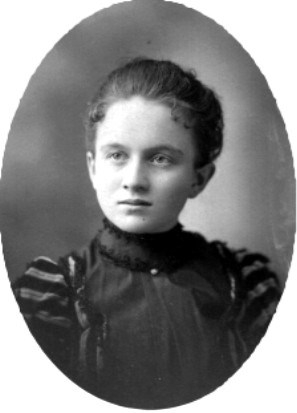
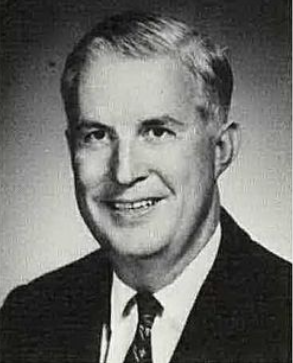
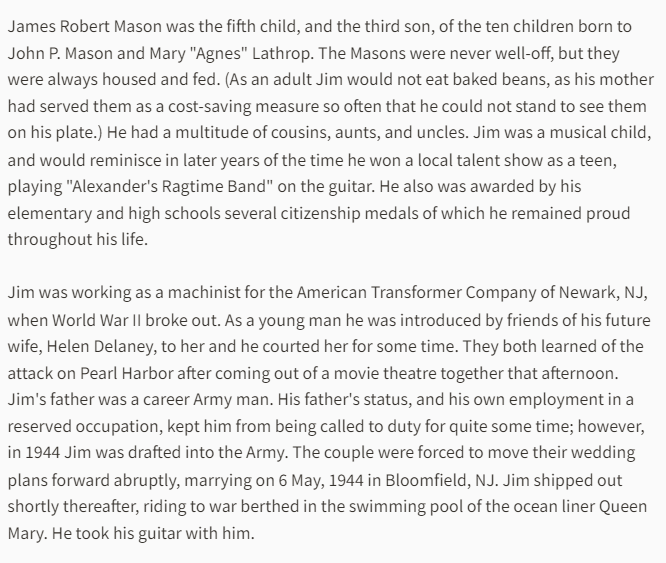

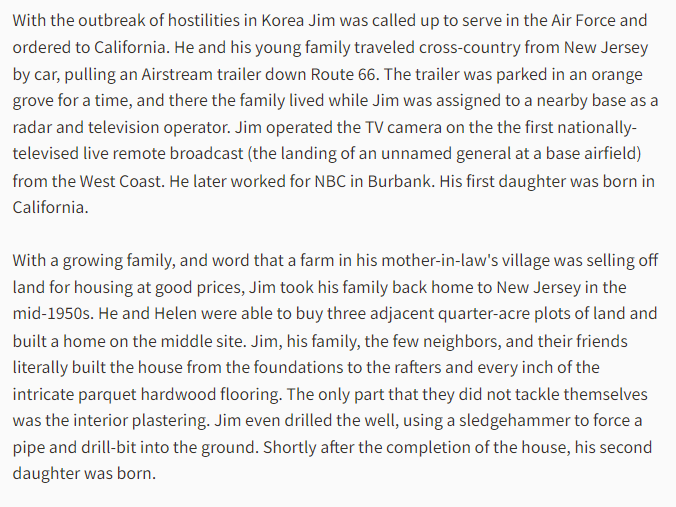
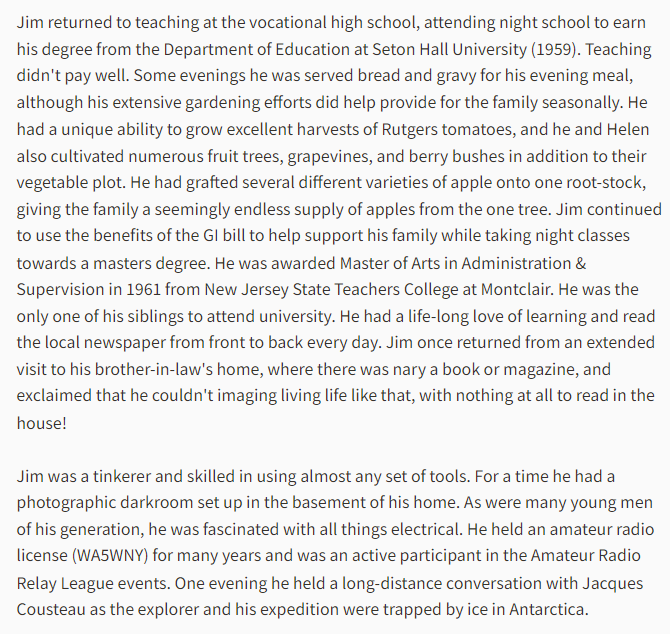
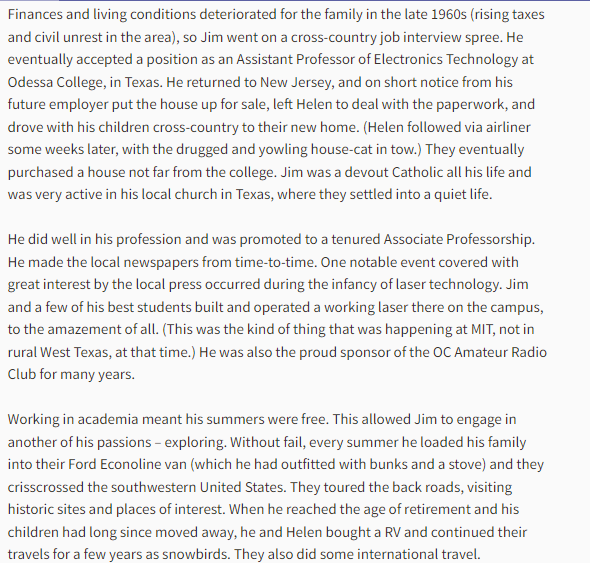
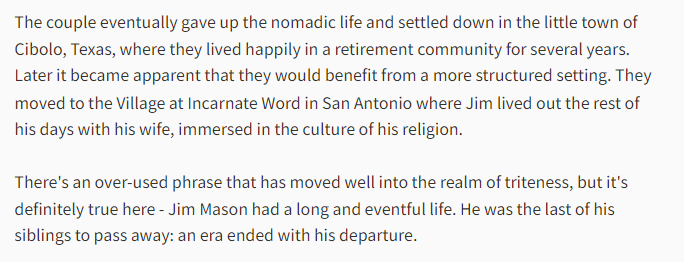 ”
”






